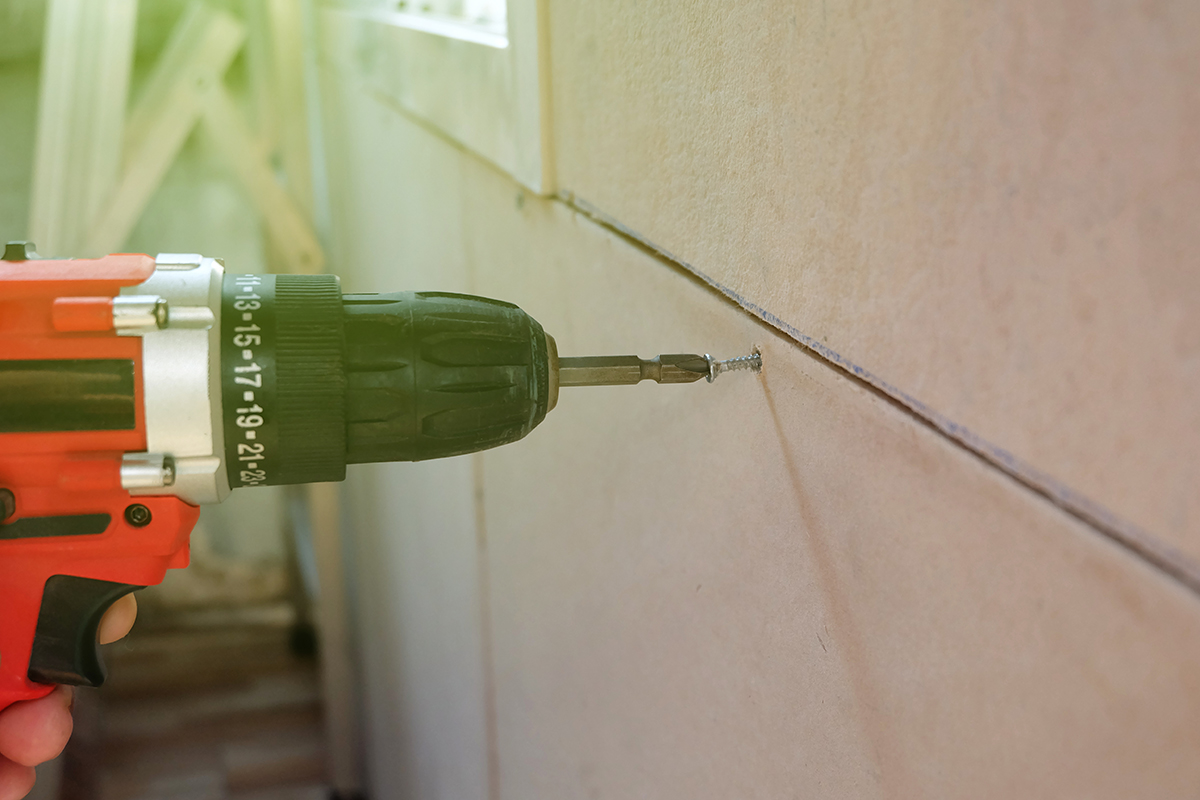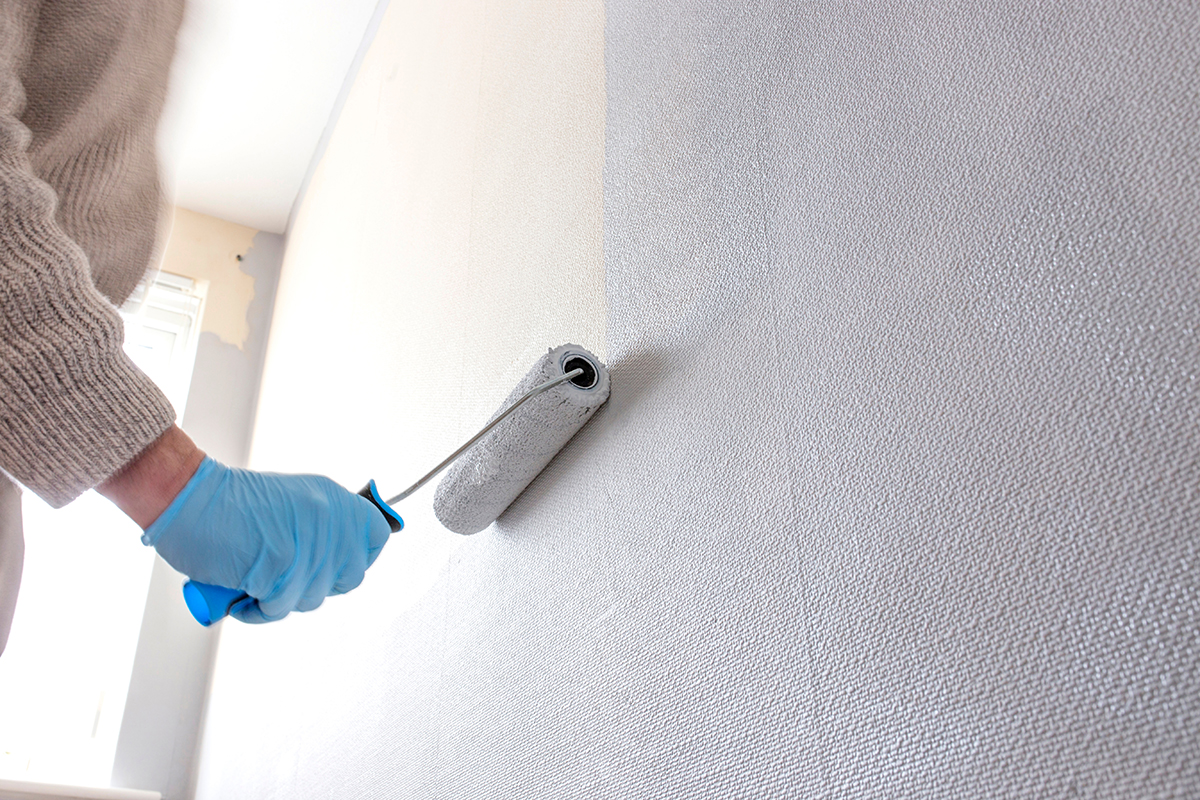As a homeowner, you may wonder if walking on cement board is okay. Fortunately, we have done some research for you, and here is what we found.
It is not recommended to walk on a cement board immediately after installation. You should wait at least 24 hours to prevent the tiles from shifting in the mortar or cracking.
Cement board is known to be stable in high humidity. Keep reading to get detailed information about cement boards and how they can be effectively used.

Can You Walk On Cement Board?
Tile flooring installation requires specialized equipment and a lot of experience for a job well done. Depending on the tile format, project size, and general layout, the installation procedure may take some time. But after the work is done, a curing procedure must be carried out.

We may include affiliate links and curated AI content to highlight top design styles.
The curation usually takes little time, but to give the cement board time to set fully, they shouldn't be walked on for at least 24 hours. This guarantee the materials' durability.
A newly installed cement board can be fragile and susceptible to damage. Being patient is necessary because one mistake can easily destroy hours of labor.
Before the sealer, grout, and mortar have thoroughly dried, placing weight on tiles might cause them to shift or even break. To avoid walking on a floor that isn't quite ready, it can be a good idea to tile a high-traffic area gradually. You can use strategy by establishing walking paths.
Can You Just Screw Down Cement Board?

Yes, a cement board can be screwed. However, you must use screws explicitly made for installing cement boards to attach cement boards to your fixtures.
These screws are usually given when the cement board is purchased. Hardware and household equipment shops also sell them. The screws are given a special coating to make them corrosion-resistant because the levels of alkali in the cement of the boards could lead to corrosion.
If you cannot locate or do not have access to cement board screws, there are alternative types of nails you can use to attach cement boards.
However, only use galvanized or hot-dipped nails if you decide to utilize nails. Similar to the screws, these nails feature a corrosion-resistant coating that prevents them from rusting or fading when exposed to moisture, or in this case, from the alkaline state of the cement board.
What Kind Of Screws Do I Use for Cement Board?
Use screws made specifically for installing cement boards. Cement board-specific screws will have tiny grooves directly under the screw head. This enables a stronger grasp by allowing the screw to penetrate the cement board. These screws have extra-sharp tips and deep, wide threads to assist them in sitting flush on the board.
Beyond the galvanized nails and cement board screws, any other screw-type will end where the shaft widens and leave the head sticking up, resulting in a weaker finish and interfering with the flooring, tile work, or other materials utilized in your project.
Can You Tile Right Over Cement Board?

Yes, you can tile right over cement boards. After installing a cement board on the floor, cover the gaps with mortar and wait for the mortar to dry.
This is usually 12 hours, although, in certain situations, it might be up to 24 hours. The backer board is ready to receive the tile mortar when the mortar has dried. Most floor tiles are made of cement board, which has largely taken the place of plywood and drywall backing in wet areas like shower and tub surround applications.
Since cement board doesn't include organic ingredients, unlike drywall, green board, or plywood, it provides a sturdy, long-lasting foundation for tiles. It is not susceptible to rot, mold, shrinkage, or decomposition due to moisture. Undoubtedly, one of the most resilient floor or wall surfaces you can install is the one with ceramic tile put over cement board.
What Happens When Cement Board Gets Wet?
You will likely need cement board in any project, whether it's a bathroom makeover or anything else involving the installation of tiles.
These boards are made from sheets of cement and cellulose fibers, produced from a durable substance. Given these characteristics, many people are curious about what happens when cement boards get wet.
Cement boards are technically not waterproof, but they are water-resistant. Cement boards are ideal for usage in damp regions because of their water-resistant characteristics, which keep the board from degrading when exposed to water.
However, even though cement boards are water resistant, they are not impermeable, so a barrier or sealant should be used to stop moisture from penetrating beneath. Your cement boards won't get damaged if they become wet. However, moisture will weaken the substrate to which you have attached your cement board.
Can You Install Cement Board Without Thinset?
One step that some contractors frequently omit is using thinset under cement board. Some installers, according to reports, claim that if you use the correct screws and a good number of them, there is no need for thinset.
However, several manufacturers reveal it is advisable to put thinset under their cement board; if you don't, your work may be affected. To get the best result, you should follow the installation instructions provided by the manufacturer.
Under the tile, thinset produces a firm surface and stops flexing, which can cause breaking. Thinset will increase strength, fill in gaps, and decrease the likelihood of movement between the backer board and the subfloor. It is recommended to take this extra step to ensure your floor lasts longer.
How Do I Install Cement Board?

Installing a cement board is an easy-to-do task; all you have to do is follow these steps:
- Prepare your work area.
- Trim your cement boards to size.
- Apply your mixed thinset mortar.
- Set your boards in place.
- Apply fiberglass mesh tape.
- Apply another layer of thinset mortar.
After the final step, you can apply a waterproof membrane depending on your project. Before storage, make sure to seal any mortar or membrane that is remaining. This is to ensure it is a good condition for the next renovation. Remember to remove debris like pieces of boards and the remaining mortar from your workplace.
Does Need To Be Painted?

Cement boards required painting. It is nearly always painted when cement boards are applied to building exteriors. Paint won't harm this material because it is mold- and waterproof-resistant. But before painting, the surface needs to be prepared.
Cleaning the cement board is the first step. It can be cleaned with a firm brush and soapy water. Make sure the surface is dry after washing it before you begin painting. The paint will not adhere properly and may even start to peel if any parts are still damp.
How Long Does Cement Board Last?
Cement boards can last for around 50 years. It is one of the most durable flooring materials since it has some of the longest warranties in the business, which are typically about 50 years. However, depending on the quality of the paint, it may require refinishing from time to time, often every 10 to 15 years.
Is Cement Board Better Than Drywall?
Yes, in terms of durability, cement board beats drywall primarily because of its superior impact resistance and moisture resistance. However, drywall is lighter, less expensive, and easier to install. Both have comparable levels of water resistance.
Cement boards are preferable for bathroom work. This is because the cement board doesn't deform or degrade when it rains. As a result, it gives tiles a secure base on which to rest.
Even green or purple boards cannot be compared to waterproof cement boards. For shower ceilings and behind showers, many contractors prefer this material.
Wrap Up
Cement boards do not allow mold or mildew and will not crumble. As a result, they are mainly used as tile backing. However, walking on a newly installed cement board is not advisable. It is better to wait for some time before walking on it, so it doesn't get damaged.
If you enjoyed reading this post, here are similar articles you may like:



